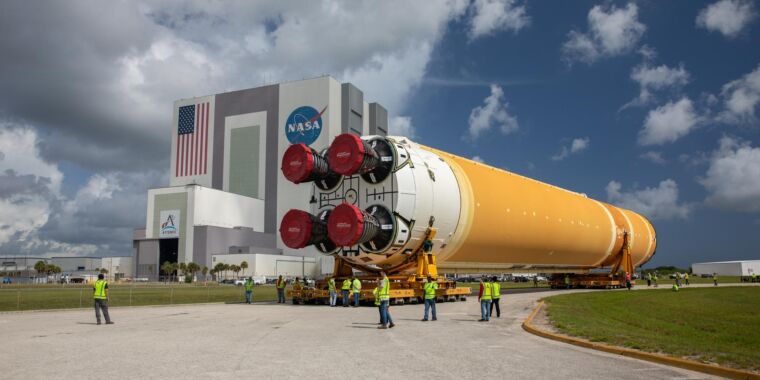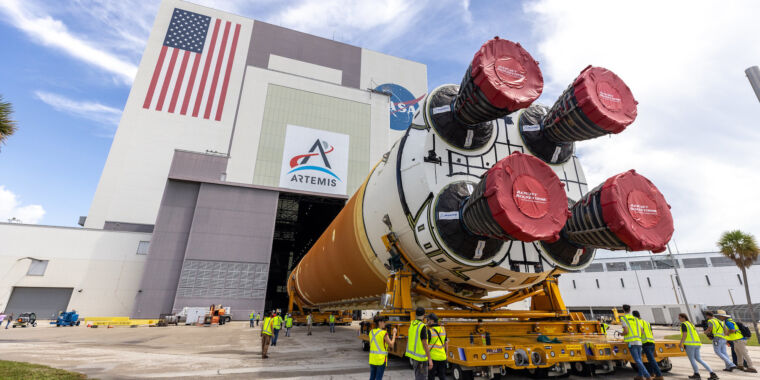Star Trek: Lower Decks S5 teaser gives Cerritos crew one last mission
“Lower decks! Lower decks!” The fifth season of Star Trek: Lower Decks will be the animated series’ last (boo!).
Star Trek: Lower Decks is a particular favorite among Ars staffers; it’s arguably the best of the recent crop of Star Trek shows, along with Star Trek: Strange New Worlds. So we were disappointed when we learned that the animated series would be ending with its fifth season. Paramount+ debuted the first teaser for S5 during the Star Trek panel at San Diego Comic-Con over the weekend, along with a teaser for Star Trek: Section 31—a spinoff film from Star Trek: Discovery featuring Michelle Yeoh’s Philippa Georgiou—a clip from Strange New Worlds S3, and the latest news about Star Trek: Starfleet Academy.
The Lower Decks teaser opens with a suitably nostalgic recap of some of the highlights of the adventures of the plucky crew of the USS Cerritos, inviting viewers to join them for one last adventure. Cue Boimler (Jack Quaid) and Mariner (Tawny Newsome) in voiceover objecting to that description (“Yeah, right, we’re not done voyaging—we’ve hardly even cracked one quadrant yet”). Their S5 mission involves a “quantum fissure” that is causing “space potholes” to pop up all over the Alpha Quadrant (“boo interdimensional portals!”), and the Cerritos crew must close them—while navigating angry Klingons, an Orion war, and who knows what other crazy developments?
The final season of Lower Decks premieres on Paramount+ on October 24, 2024, and will run through December 19.
Newsome is already committed to her first post-Lower Decks project: co-writing the first live-action Star Trek comedy with franchise head honcho Alex Kurtzman. There’s no title yet, but Deadline Hollywood reports that the premise will involve “Federation outsiders serving a gleaming resort planet [who] find out their day-to-day exploits are being broadcast to the entire quadrant.” So, a Star Trek Truman Show? Color us intrigued.
Star Trek: Strange New Worlds S3
A first look at what’s coming in the third season of Star Trek: Strange New Worlds.
Strange New Worlds marked a welcome return to Star Trek’s original episodic structure. The franchise’s Comic-Con panel featured a special sneak peek at the upcoming first season. The clip is a callback to the S2 episode “Charades,” in which a higher-dimensional race, the Kerkohvians, accidentally reconfigured Spock’s half-human, half-Vulcan physiology to that of a full-blooded human—just before Spock was supposed to meet his Vulcan fiancee’s parents.
The S3 clip has the situation reversed: The human crew must make themselves Vulcan to succeed on a new mission. They succeed in record time but aren’t able to change back. The Vulcan versions of the Enterprise crew are hilariously on point, and a long-suffering Spock must endure repeated references to his inferior half-Vulcan status.
We also learned that Cillian O’Sullivan will join the recurring cast as Dr. Roger Korby. ToS fans will recognize that name; it’s a legacy character (originally played by Michael Strong). Korby was a renowned archaeologist in the field of medical archaeology, introduced in the episode “What Are Little Girls Made Of?‘ as Nurse Chapel’s long-missing fiancé. That’s bound to cause problems for SNW‘s Nurse Christine Chapel (Jess Bush), who is currently romantically involved with Spock. SNW S5 will premiere sometime in 2025, and the series has already been renewed for a fourth season
Speaking of Strange New Worlds, remember that fantastic S2 episode (“Substance Rhapsody”) in which a quantum probability field caused the entire crew to break into song? Executive producer Akira Goldman revealed during the panel that he is toying with the idea of a Star Trek stage musical, although he cautioned that “We’re in the very early stages of figuring out whether we can bring a version of [“Substance Rhapsody”] to the stage.”
Star Trek: Lower Decks S5 teaser gives Cerritos crew one last mission Read More »


























